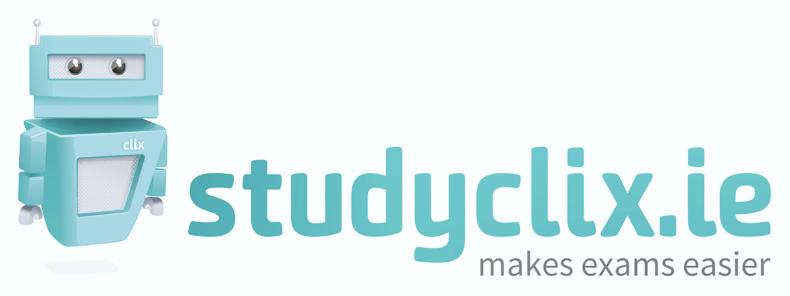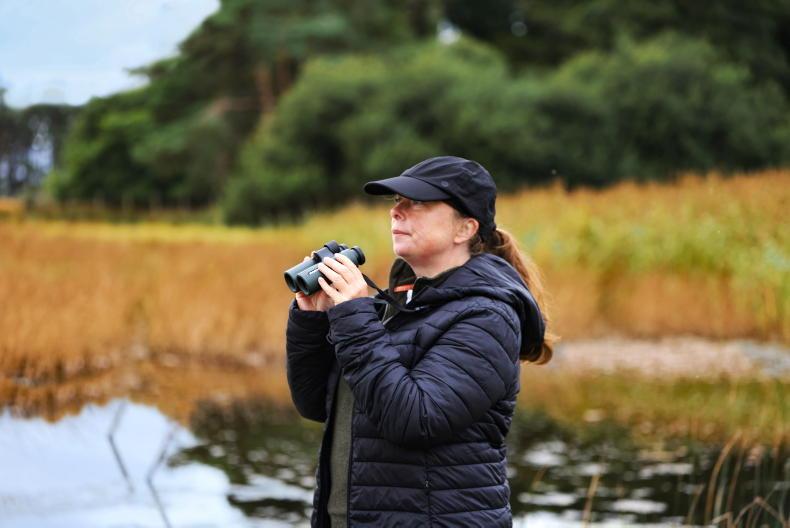Diamonds are formed under immense pressure, from shifting plates of rock – however, this isn’t going to be a geography lesson. The diamond being referred to here is Studyclix, a business launched in April 2012 by Luke Saunders and Keith Wright, aiming to help ease the pressure surrounding exams.
The business began in Luke’s kitchen in 2009 with the simple goal of making the Junior and Leaving Cert exams easier for the students doing them and the teachers teaching them.
Luke is originally from Dalkey but now lives in Strandhill, Co Sligo and is a secondary school teacher in Enniscrone.
“When I started teaching I noticed things hadn’t really changed since when I was in school,” says Luke. This lack of progress was his inspiration for the business – somewhere where the vast array of notes, exam papers, marking schemes and sample answers for every Leaving and Junior cert subject could be gathered together in an easy-to-use website.
For students
Luke believes there are many benefits to students who sign up to Studyclix: “Every subject is broken up into smaller, easier to manage topics and with each topic there are the relevant exam questions, sample answers and marking schemes provided. As well as that there’s a whole bank of videos that students can access as well as regular updates on our blog with different tips and advice.”
Studyclix isn’t just about study aids and notes, it is also a community. There is a forum on the website so students can find answers to questions in real time rather than having to wait until they’re back in the classroom.
“We have two types of accounts,” Luke says when asked how students can access the content.
“The first is a basic account that gives limited access to the website on a sort of trial basis. Then if students think ‘yeah this is helping me’ they can upgrade to a plus account for €35 for 12 months. That will give them access to everything.”
Luke is conscious of the price but also realises a need to keep the business viable, as Studyclix employs at least five staff – many of whom are Luke’s former pupils.
“We try to keep the cost low because at the end of the day it’s teachers that are promoting us and we don’t want them to feel uncomfortable recommending something that is too expensive for the average student to afford.”
For teachers
The other aspect of Studyclix is to make teaching easier.
“The service is free to use for teachers and we have 26,000 teachers registered, which is pretty much 100% of the teachers in Ireland,” Luke explains.
“Teachers can upload and access content from others as well as availing of an easy-to-use exam builder to save time and make preparing Christmas or summer exams easier.”
This strong engagement from the teaching community ensures that content is always up-to-date and of the highest quality, something that Luke prides the business on.
“We have a panel of expert teachers in each subject to ensure Studyclix is always one step ahead of any syllabus changes.
“For example when project maths was introduced, there was a whole load of confusion around that and we had teachers visiting the site to try and figure it out. That meant Studyclix became a knowledgeable source on the new course.”
Between both types of accounts there are currently over 100,000 Studyclix subscribers.
Luke has now set his sights on further expansion: “We recently launched in the state of Victoria in Australia. We don’t pretend to be experts on their exams so we’ve worked with experts over there who are and now have the website up and running.”
To some it may seem unusual that Luke would seek to expand in somewhere like Australia rather than the UK, but Luke explains it is to do with his work schedule: “Realistically my work day is 9am to midnight so it wouldn’t suit me to have to liaise with someone in the UK. If you think, 10pm here is 8am in Australia so it means I can set up meetings when things quieten down here.”
Balancing act
The stumbling block for many people when starting their own business is how to work around an existing job – teaching in Luke’s case.
“Well for me with Studyclix”’ he begins, “it helps that I’m a teacher in that I’m working with students and other teachers every day.
“All the same it is a large time commitment and I spend my evenings working on it after I put my kids to bed at 8pm.”
This time commitment however, does not phase Luke: “I love what I’m doing, one of the things about being an entrepreneur is it doesn’t feel like you’re putting in as many hours.
“Another thing is that with an internet business like this, there are no set hours and I can work on it whenever I have free time.”
State exams are about to get into full swing and Studyclix is currently bubbling with activity as students seek the final piece of the puzzle that could make all the difference before summer comes. And while summer will be a period of relaxation for most, Luke will be busy adding even more content and unique features to Studyclix.
Studyclix have teamed up with Irish Country Living to help our readers in advance of their exams.
Keep an eye on our website www.farmersjournal.ie/country-living for resources that will go up the night before each Leaving Cert exam.
These resources will contain tips for the exams which will help put you on the right foot for the following day.
Leaving Cert Maths Paper One
Attempt EVERY Question
It cannot be stressed enough how pivotal this is to succeeding in the exam. Even if you have no idea how to approach a question, you should write something down. This could be a formula coming directly from the log tables or a manipulation of what you already know. For example, in one question in 2012, 15 out of the possible 25 marks could have been obtained by stating a formula from the log tables. Showing that you have even some small inkling of where a question might be heading is rewarded.
Don’t think that attempts will look ‘stupid’! At the end of the day the examiner wants to give you those marks.
Read Every Question Carefully
Students tend to focus on mastering the abstract topics on the course and not giving enough attention to the simple things such as reading the question carefully. Bring a highlighter into the exam and highlight the key words in every question. Don’t be tempted to jump into questions without having fully read them first. Pay particular attention to the way the answer is to be presented – such as rounding a figure to one, two or three decimal places. Students often call back their scripts to find they lost the difference between a grade on little things like this, so be careful!
Keep Your Work Neat
By keeping your work neat and tidy, you are keeping your examiner happy. They will be more likely to award partial credit if you label your rough work and keep it neat. It will also make it easier for you when you are rechecking your answers at the end of the exam. If you think you have made a mistake, simply put a single line through it and bracket around it. You can answer a question in numerous ways and the examiner is obliged to award marks for whichever way is correct. Short, clear headings or comments in you work, help the examiner to understand what you’re doing.
Leaving Cert Geography
With short questions as well as up to seven essays to be written in two hours 50 mins, it is very common for students to be scrambling at the end of the exam. For a higher level student, Luke suggests spending 25 minutes on the short questions, ten minutes reading the long questions and then 30 minutes on each long question.
“A good tip I give to my students is to write a timing plan with actual times on the front of their exam paper so that when they look at their watch and it’s say 10:45, they know that they should be mid-way through their second question.”
Students should also be familiar with the concept of a SRP – single relevant point – which is how the corrector will be marking your paper. A typical essay type long question will be worth 30 marks at higher level meaning that the student is required to write at least fifteen relevant individual points to gain full marks.
It’s also worth doing one last check over the layout of the paper to avoid any confusion on Friday morning. There will be 12 short questions, you should try them all and you will be marked on your best 10. You then need to choose one from three physical geography questions, one from three regional geography questions, one from three human/economic elective questions and, finally, at higher level you will do one question from the three option questions you have covered with your teacher.
“Make sure you know the basics of OS map reading and are able to use six figure grid referencing to locate specific points on a map. Also be familiar with how to locate a building on an aerial photo e.g. if a church was on the lower right side of an oblique photo then it would be located in the right foreground,” says Luke.
“In almost every year’s exam, students will be required to draw a sketch map of an aerial photo or OS map. I’ve seen students lose easy marks because they make simple mistakes here. The first step is to draw a frame that is in proportion to the dimensions of the map or photo. The easiest way to do this is to measure the width of the map or photo and then halve it for your sketch. Repeat the same process for the height and don’t forget to add in a title and a key to gain full marks.”
Luke Saunders is a Geography, Science and Maths teacher at JMSS Enniscrone, Co. Sligo











SHARING OPTIONS